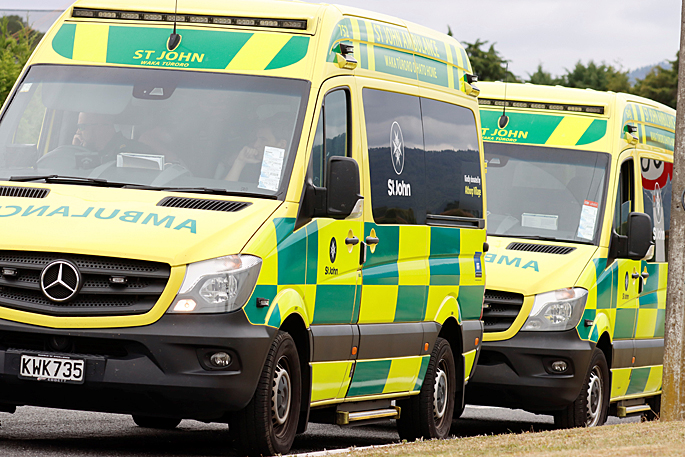St John Ambulance has continued to be there for New Zealanders throughout the Covid-19 pandemic in 2021, responding to more than half a million emergencies across the year.
Similar to 2020, the reduced movement of New Zealanders – particularly in Auckland due to extended lockdowns – resulted in fewer trauma related incidents, however overall, 111 call volumes in 2021 increased nationwide to 606,503 – 9.6 per cent more than in 2020 (553,286).
Dan Ohs, St John Deputy Chief Executive - Ambulance Operations, says 2021 was another extremely busy year with the Covid-19 pandemic continuing to create ongoing challenges across the emergency ambulance service.
'This prolonged significant demand is compounded by a challenging work environment due to Covid-19 and longer times for ambulance crews to complete 111 call-outs due to additional safety precautions that must be taken both at the scene, during transport and at hospital.
'Our emergency call handlers responded to a significant number of calls in July and December last year - both recording more than 55,000 calls for each month. In December alone we recorded 56,692 calls – a 9.8 per cent increase on December 2020.”
Trauma related ambulance call-outs fell 12.3 per cent in the period from July – December in 2021 (6553 incidents) when compared with the same period in 2020 (7474 incidents).
In contrast, there was a concerning rise in the number of mental health and suicide attempt incidents – which were up 30 per cent on the previous year.
'We continue to respond to very distressed and vulnerable patients but the most disturbing trend out of these types of incidents, is the number involving patients aged under 14.
'This age group had a 36 percent increase in 2021 (up 49 patients to 186 patients) compared to the previous year (137 patients) and was 77 per cent higher compared to 2019 (105 patients).”
St John also saw a notable increase in patients with chest pain and breathing problems – an increase of 15.5 per cent and 14.4 per cent respectively – which along with the rise in mental health related call-outs, St John attributes to the direct impact of Covid-19 or Covid-19 lockdowns.
Last year saw the completion of St John's four-year project to double crew all transporting ambulances, of which 99.8 per cent of transporting ambulances are now fully crewed.
St John Ambulance is preparing for another challenging year ahead in 2022 as New Zealand moves from a pandemic response to Covid-19 to endemic.
'We've seen the impact of the Omicron variant in other parts of the world and it's just a matter of time before we experience a widespread outbreak here in Aotearoa.
'St John is well adept at responding to patients with infectious conditions and we have several contingency plans underway to lessen the impact it might have on our capability, including bolstering our recruitment and training efforts to bring on board more ambulance officers.
'St John will continue to step forward to provide emergency ambulance services for New Zealanders, but we'd also like to remind people that while our ambulance staff will respond as soon as possible to life-threatening and time critical emergencies, if your condition is not urgent there may be a delay in getting an ambulance to you and we ask for your patience.”
St John advises if it is an emergency, people should continue to dial 111 for an ambulance but if someone is feeling generally unwell and needs health advice, they should call their regular health provider or Healthline in the first instance and consider alternative methods of transport to medical facilities for non-urgent treatment.
Breakdown of emergency ambulance service incidents by chief complaint
This data is for the last two years in descending order for 2021.
It reflects the number of emergency ambulance service incidents received, not number of patients and therefore actual patient numbers are higher.



0 comments
Leave a Comment
You must be logged in to make a comment.